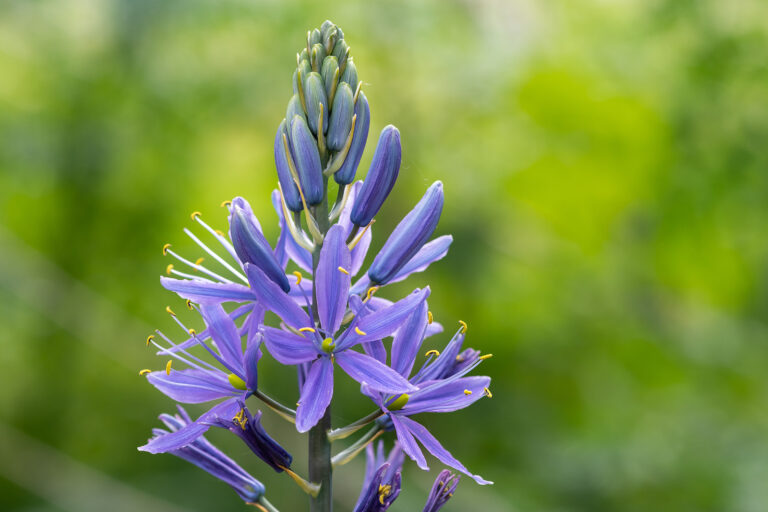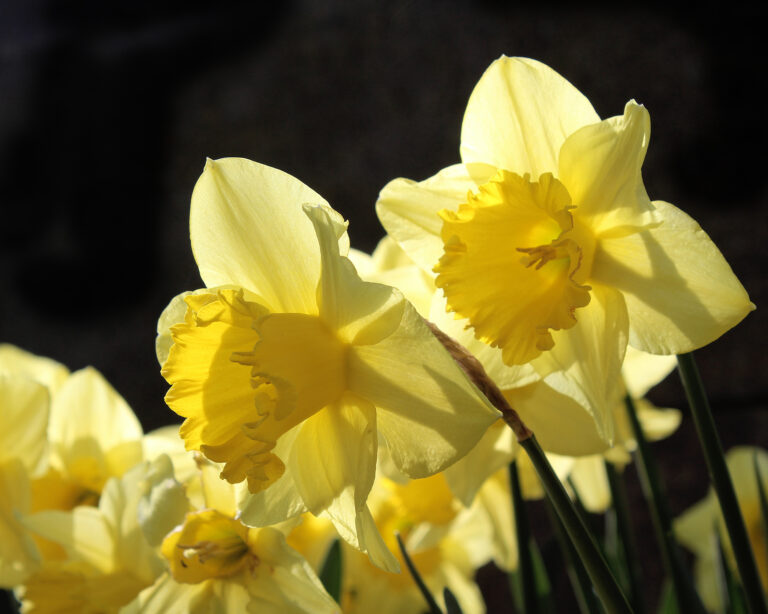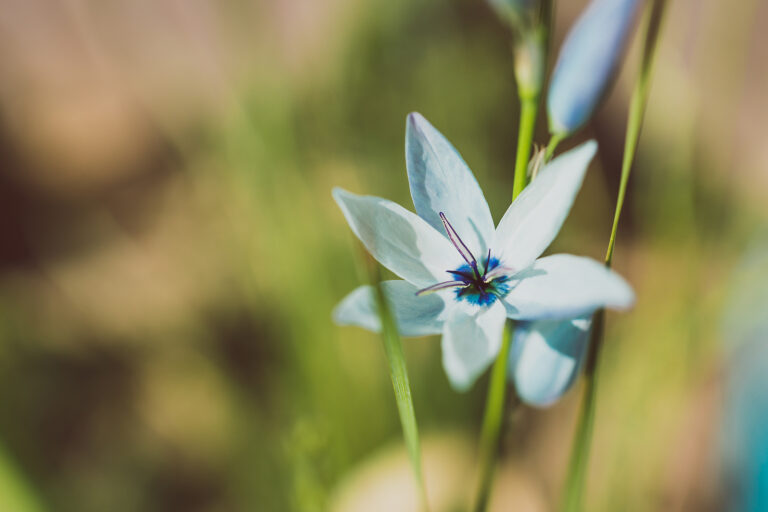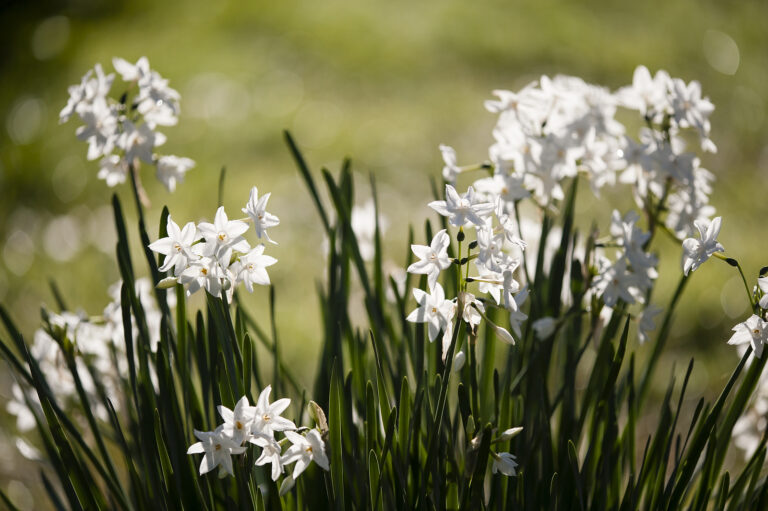How to Grow and Care for Freesia
Freesias are commonly grown for their fragrance as well as their graceful racemes of colorful, funnel-shaped flowers.
Freesias bloom from late winter to early spring. Flowers are held erect in dense racemes at the end of arching, often leafless spikes. Flowers appear on the upper sides of the flowering stem. Blooms can be white, pink, red, lavender, purple, blue, yellow, and orange. Some blooms are bi-colored.
Leaves are narrowly sword or lance-shaped. Plants produce only a few linear leaves. Plants tend to dry up after they bloom in spring or summer and then start growing again in autumn.
In cold climates, freesias are easily grown in pots in sunny windows.
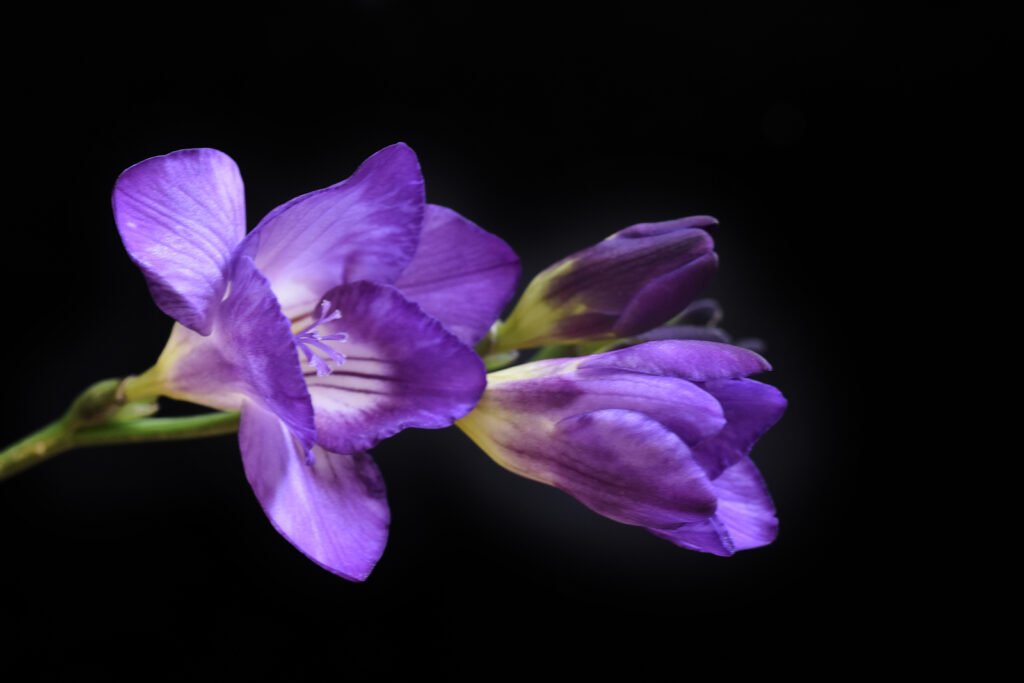
Get to know Freesia
- Plant type: Tender spring-blooming bulb
- Growing Zones and range: Annual in Zones 2 to 8; perennial in Zones 9 to 11 where summers are dry and winters are cool and moist; grow as an annual elsewhere. Freesias grow best where temperatures are 60-70°F (16-21°C) in the day and 50-60°F (10-16°C) at night.
- Hardiness: Freesias are hardy to 20°F (-7°C); freesias grow best where summers are not hot.
- Height and width: 12 to 18 inches (30-45cm) tall, 4 to 6 inches (10-15cm) wide
- Foliage: Narrow, sword-shaped to lance-shaped leaves from basal fans
- Flowers: Single or double tubular or funnel-shaped flowers, usually scented brightly colored; a variety of colors–blue, orange, pink, purple, red, white, and yellow. Flowers grow to 2 inches (5cm) long, in one-sided spikes.
- Bloom time: Spring blooms in Zones 8-10; summer blooms in Zones 4-8.
- Uses: Plant in beds, borders, and containers; a good choice for a cottage garden or cut flower garden, fragrant
- Common name: Freesia
- Botanical name: Freesia spp.
- Family: Iridaceae

Where to plant Freesia
- Plant freesias in full sun or very light shade, especially in Zones 8-11.
- Grow freesias in average, well-drained soil, preferably sandy soil.
- Freesias require cool conditions and good air circulation to grow well.
- When growing freesias in Zones 10 and 11, schedule planting times so that they will be growing during times of the year when temperatures remain cool at night.
- Freesias prefer a soil pH of 6.5-7.5.
When to plant Freesia
- In Zones 2-8, plant corms in spring after all danger of frost has passed.
- In Zones 9-11, plant corms in the fall.
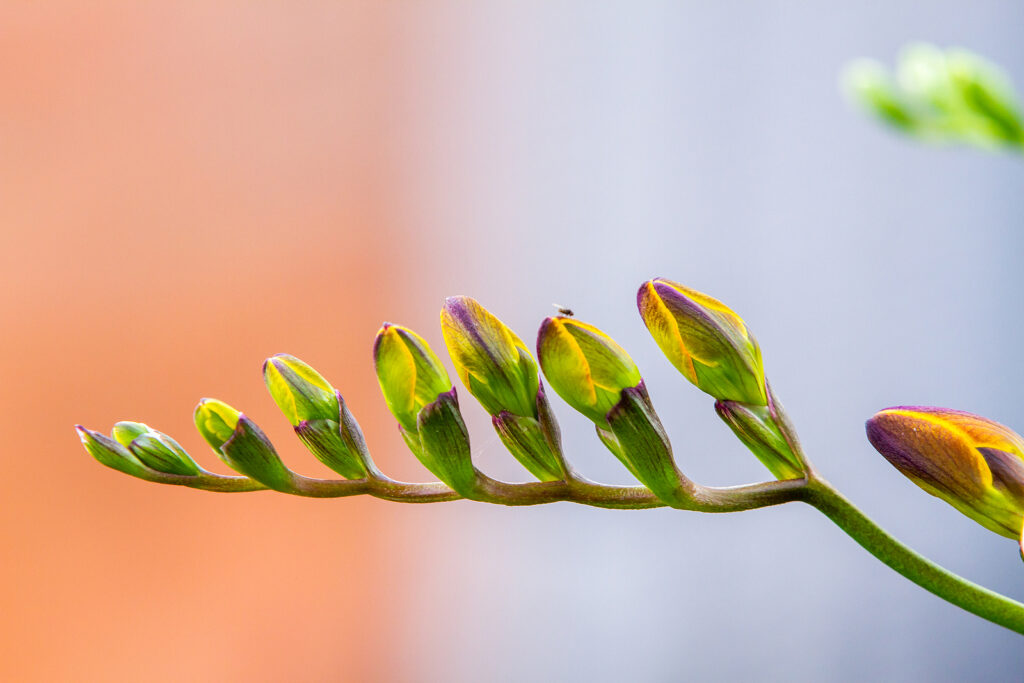
Planting and spacing Freesia
- Space freesias 4 to 6 inches (10-15cm) apart.
- Plant corms 2 to 3 inches (5cm-7.6) deep outdoors. Cluster freesias in groups of a dozen or more for support.
- Plant corms 1/2 to 1 inch deep in containers. Plant the pointed end up.
How to water and feed Freesia
- Freesias need ample moisture during the growing season; keep the soil evenly moist. Freesias need less moisture when they are dormant during summer.
- Feed freesias in spring with a bulb bloom boosting fertilizer or high phosphorus fertilizer; feed freesias before buds form.

Freesia care
- Extend the bloom time of freesias by deadheading spent flowers.
- Support freesias with stakes during the growing season as needed.
- Mulch around freesias in summer or dry weather to conserve soil moisture.
- In wet-summer regions, corms should be dug and stored or treated as annuals.
- In Zones 2-8, dig corms in the fall and store them indoors in dry peat moss at 50°-60°F (10°-16°C) until you replant them in spring.
Growing Freesia as a houseplant
- Grow freesia in a cool room with direct light and average humidity.
- Plant corms 1 inch deep in a well-drained, soilless medium.
- Keep the medium barely moist when the plant is growing; as soon as buds form and until the flowers fade, keep [p the medium constantly moist.
- Fertilize monthly when the plant is in bud or in flowering.
- The corms will flower three to four months after they are planted; plants will need to be staked.
- After plants have bloomed, decrease watering, allow the foliage to turn brown, remove the form from the pot and store them at 45°F (7.2°C) in a dark place until the following season, the replant.
Freesia common problems
- Freesia is prone to spider mites, aphids, root rot, and Fusarium wilt.
Freesia propagation
- Sow seed in autumn.
- Remove small offsets in autumn and replant them in spring.
- Freesias will self-sow if faded flowers are not removed; volunteers tend to revert to cream marked with purple and yellow.
Growing Freesias indoors in containers
- For freesias to grow in containers indoors, plant the corms in the fall for bloom the following spring. Or plant them in spring after the last frost for summer bloom.
- Keep the containers shaded and barely moist until shoots appear.
- Once plants are growing keep the soil evenly moist, not wet; gradually move the plants into full sun.
- Feed container-grown plants weekly with an all-purpose fertilizer.
- Stake plants when they are young.
- Lift corms after the flowers fade and the leaves turn yellow; corms can be replanted the next season.
- Freesia corms can be left in containers if you allow the soil to dry out and store the containers, soil, and corms in a cool 40° to 50°F (4.4-10°C) place until the following spring.
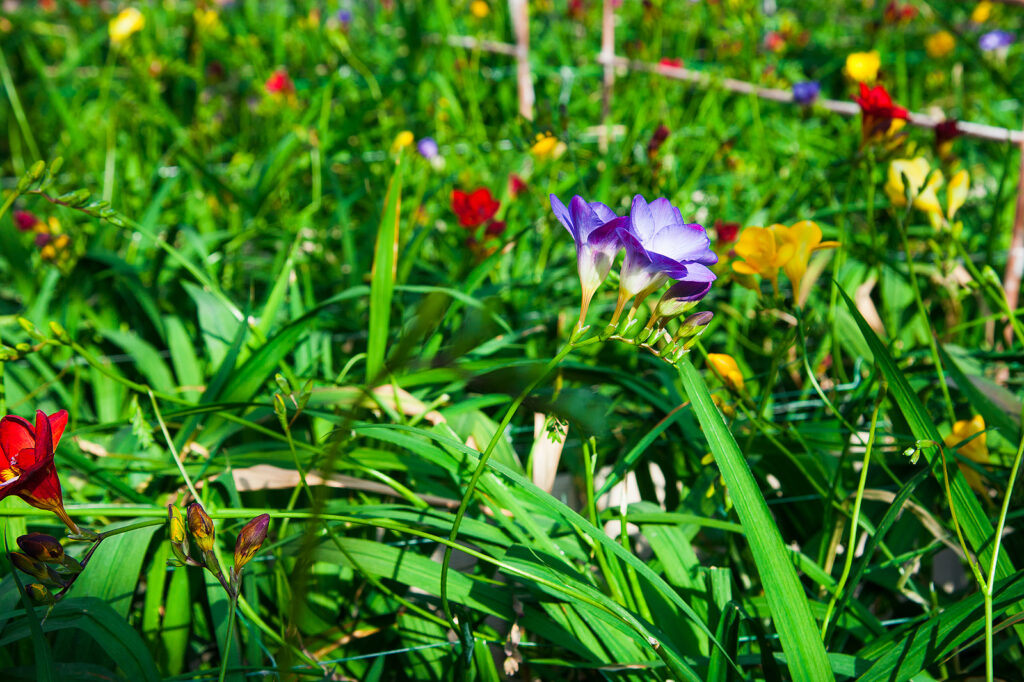
Freesia hybrids to grow
- There are numerous freesia hybrids. Hybrids range from 12 to 18 inches (30-45cm) tall and come in shades of pink, lavender, lilac-blue, red, yellow, creamy white, orange-red, and bicolors.
- ‘Ballerina’ has white flowers.
- ‘Blue Heaven’ has bluish-mauve flowers.
- ‘Golden Melody’ has yellow flowers.
- ‘Oberon’ has light blood-red throats with lemon-yellow veins.
- ‘Red Lion’ has yellow-centered red-orange flowers.
Freesia frequently asked questions
Q: What’s the best way to grow freesia in the house?
A: Plant bulbs in early autumn in fertile, porous soil. Space bulbs an inch and a half apart. Place the pot in a cool place. Give little water until growth develops. Place the plant in a cool, sunny window to 60°F when the tops are one to two inches high. Avoid overwatering. Feed the plant lightly when flower buds appear.
Q: How can I have a succession of freesia blooms in my window or garden?
A: Plant bulbs at 2-week intervals from September to November; flowers should appear about three months after planting.
Q: Why did my freesias planted in pots fail to bloom?
A: After planting, freesias need a period in a cool, frost-free light place to develop root growth. When growth starts, the temperature should be 40° to 50°F, with a 5° to 10° rise in the daytime.
Q: Why are my freesia leaves turning yellow?
A: Overwatering will quickly cause freesia leaves to turn yellow. Lack of sunlight, low humidity, or extreme dryness of the soil can cause leaves to yellow.
Q: My freesias are growing spindly without blossoming, why?
A: The temperature is too warm. The atmosphere is too dry and possibly lack of sufficient sunlight.
Q: Will freesias grown from bulbs bloom a second year in the house?
A: Freesias will bloom a second year only if the conditions are right. Water and feed and keep them growing in a sunny, cool place until the foliage fades, then gradually dry them out. It’s probably best to start with new bulbs from the garden center each year.


